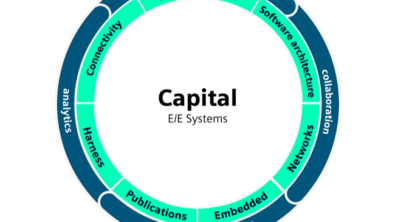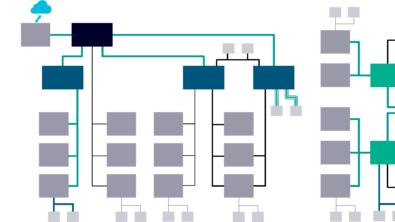How model-based systems engineering facilitates contextual E/E systems design

Growing complexity in E/E system design has become unmanageable using traditional methods – and that’s true for systems being developed across all industries. Whether developing next-generation aerospace and defense products, automobiles, medical devices, industrial equipment or other electrical/electronic systems, requirements for performance, quality and rapid innovation continue to increase.
As a result, E/E system engineers need a new approach for developing E/E architectures – one that leverages model-based systems engineering (MBSE) and a digital thread across product and application lifecycles. In this post, we’ll take a look at how Siemens’ framework for MBSE provides the foundation of an efficient, multi-disciplinary E/E systems development flow.
What is model-based systems design?
MBSE is an approach to system design that uses models as the primary artifacts for designing and developing complex systems. It involves creating and manipulating graphical or mathematical models that represent different aspects of the system, such as its requirements, architecture, behavior, and interactions.
In MBSD, the system is viewed as a collection of interconnected components or subsystems, and these components are represented using models that capture their characteristics and relationships. Models can be created using various modeling languages and tools, such as Unified Modeling Language (UML), SysML (Systems Modeling Language), or domain-specific modeling languages.
Key principles of MBSE include:
- Abstraction: Models provide a higher level of abstraction, allowing designers to focus on the essential aspects of the system without getting into implementation details.
- Iterative Development: Models are refined and updated throughout the design process. Changes made to one model can be automatically propagated to related models, ensuring consistency and reducing errors.
- Simulation and Analysis: Models can be simulated to evaluate the system’s behavior and performance under different conditions. This allows for early identification of issues, verification of requirements, and optimization of system design before physical implementation.
- System Integration: MBSD facilitates the integration of different subsystems by providing a clear representation of their interfaces and interactions. Models can be used to identify potential integration issues and ensure that the subsystems work together effectively.
- Traceability: By linking to system requirements, models enable traceability from requirements to design elements, helping to ensure that the system design satisfies the specified requirements, and allows for better impact analysis when changes occur.
MBSD promotes a systematic and structured approach to system design, fostering collaboration among designers and stakeholders, and reducing design errors and rework.
A holistic approach to E/E systems design
Beginning with the integrated, model-based, and digitalized approach to E/E system design, Siemens’ solutions create a connected E/E architecture thread that spans across the product and application lifecycles. It all begins with building the model:
- MBSE enables Siemens E/E systems engineering solutions to capture product and process data such as function definitions, requirements, test cases, configurations and more – all in a single place.
- Domain-specific engineering solutions for the various disciplines can access the data and the models as they build out their designs, which can be linked to the overall model and made available through various views.
- Thanks to abstraction, users only see the underlying data via intuitive, dynamic web-based views. Rather than being overwhelmed with information from every discipline, they only see the data they need to complete their tasks.
With access to the model, engineers across disciplines can work within the context of a holistic product architecture. This improves collaboration and design efficiency, while increasing product performance and reliability.
Download our whitepaper, “Architecture-driven E/E Systems Development Flow” for a deep dive on they synergy between Siemens’ E/E systems and architecture design solutions.


